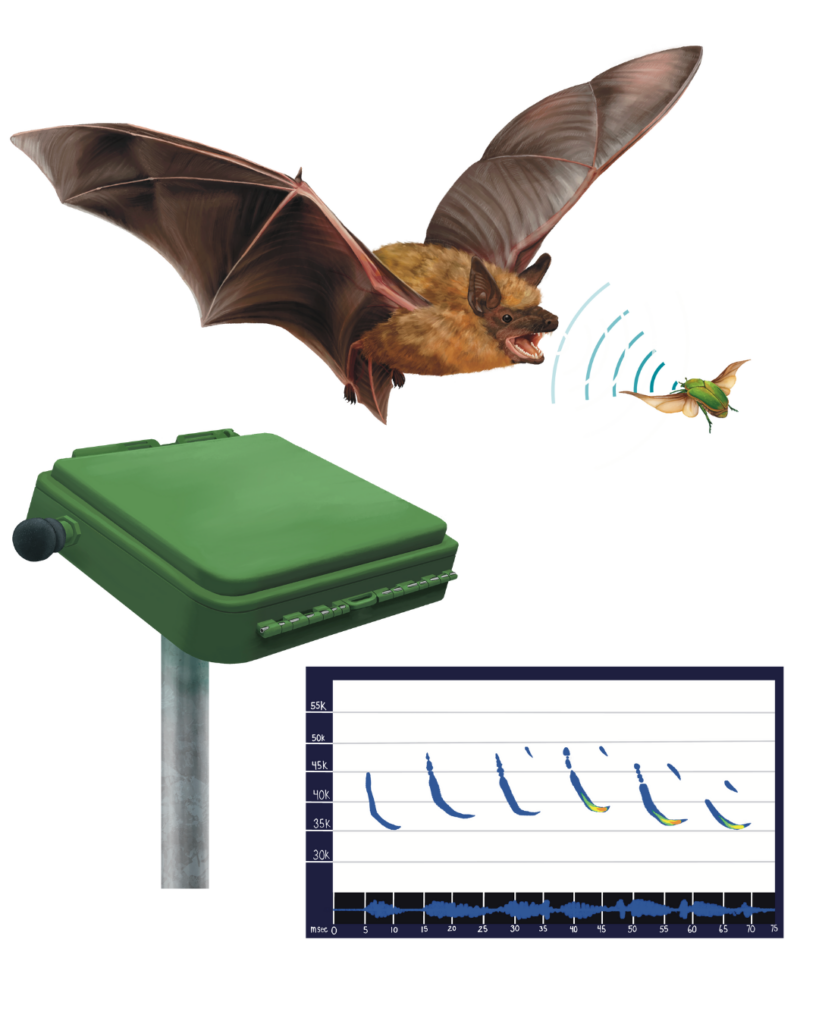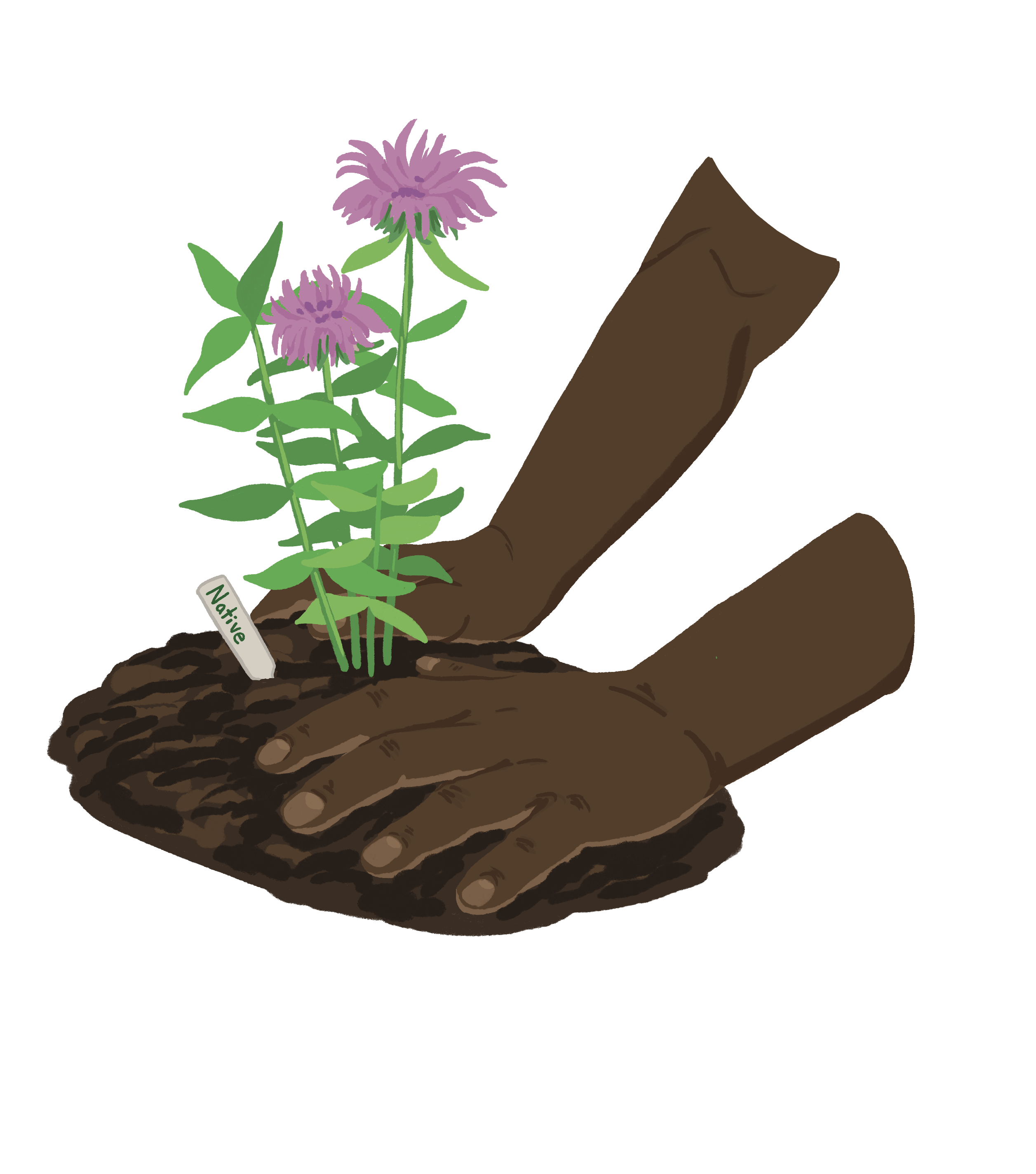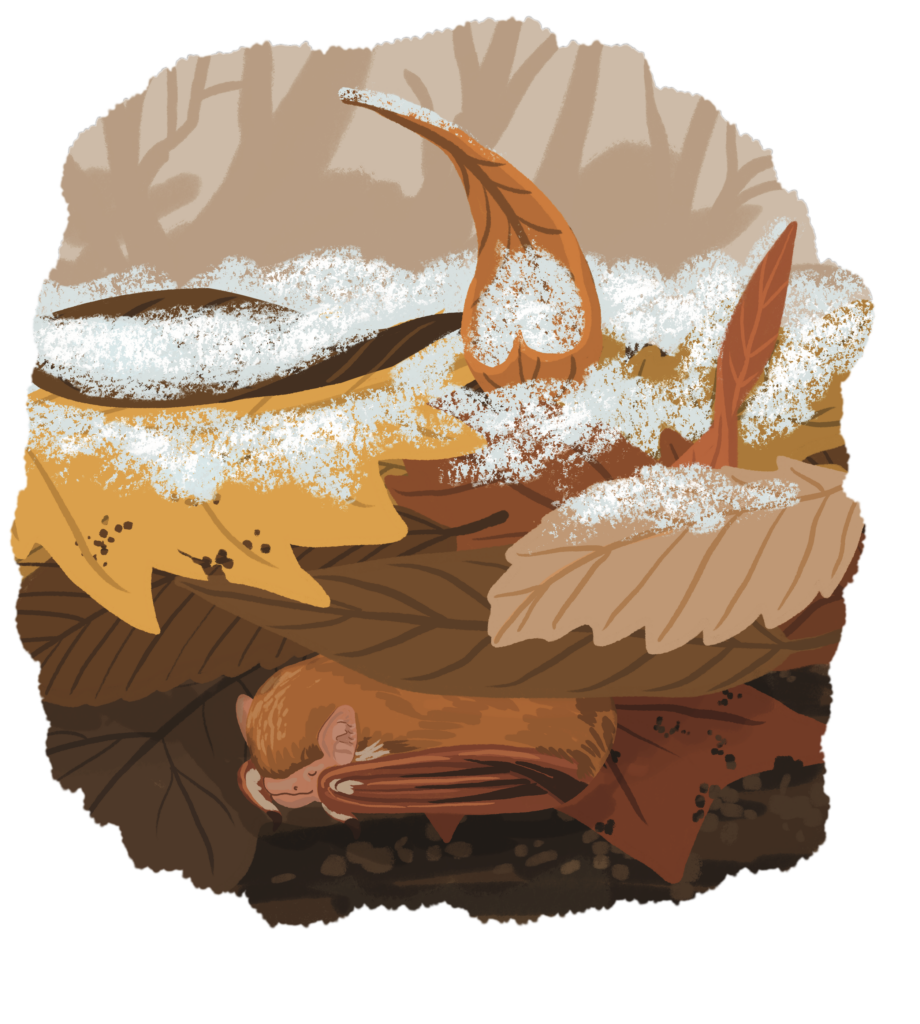Echoes in the Landscape: Uncovering How Bats Use Working Lands
Project Objective:
To understand how habitat and landscape diversity impact bat community structure and foraging activity patterns on working lands.

Pilot Study Background
Among the many ecosystem services that bats provide globally, North American bats serve as an important means of biological insect pest control in agricultural landscapes. However, numerous Virginia bat species have experienced steep population declines over the last decade due to the impacts of White-Nose Syndrome, habitat loss, and pesticide applications.
Research has demonstrated that bats utilize a mosaic of habitats for foraging at their summer roosting sites; however, intensification of agricultural practices and habitat fragmentation may compound these threats to bat populations across rural landscapes. With the majority of Virginia’s land area under private ownership, engaging landowners and habitat managers is critical toward advancing statewide bat conservation efforts.
Smithsonian’s Virginia Working Landscapes (VWL) collaborates with Virginia farmers and landowners to study and promote native biodiversity on privately-owned lands through annual monitoring surveys. These collaborations offer insights into how land management practices impact the diverse plant and wildlife communities that make up grassland ecosystems. However, bats—despite the critical role they play on our Virginia farmlands—remain locally understudied. This study is working to fill this knowledge gap.

Methodology
During this 2025 pilot season, research will focus on fields managed only once a year and not currently in agricultural use—specifically, fallow fields and meadows. At each site, a 3-meter pole will support an autonomous recording unit (ARU), which will collect bat acoustic data for seven nights each month from mid-May to mid-August. Recordings will occur nightly from 30 minutes before sunset to 30 minutes after sunrise, during peak bat activity. Researchers will analyze the data by identifying bat calls through spectrograms, and findings will be shared with landowners in a final report.
Project Impact
This project aims to evaluate how bat community structure and foraging activity are influenced by surrounding habitat and landscape composition, using GIS tools and data from Virginia Working Landscapes’ grassland vegetation surveys. In addition to generating valuable insights, the project will engage the local community in bat conservation through volunteer training, community workshops, nighttime field walks, and the creation of educational outreach materials. Findings from this pilot study will help inform best land management practices for private landowners, supporting conservation efforts for bat populations that are facing rapid decline.
Source of Funding:
- Raines Family Foundation
Project Contact:
- Erin Shibley, Survey Coordinator (shibleye@si.edu)
- Amy Johnson, Program Director (JohnsonAE@si.edu)
How can you help protect bats?

Turn off lights
at night

Keep cats indoors

Reduce Pesticide use

Plant native plants

Leave the leaf litter

Install a bat box

Leave snags standing

Protect water quality
Illustrations by Nick Garnhart